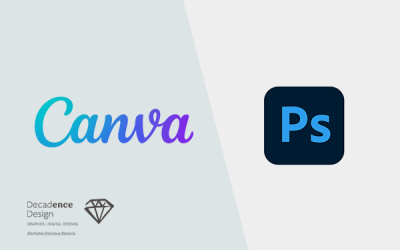In the ever-evolving landscape of marketing, businesses are constantly seeking innovative ways to capture the attention and loyalty of their target audience. One powerful tool that has gained prominence in recent years is the concept of a brand story. A brand story is more than just a catchy tagline or a clever logo; it is a narrative that conveys the essence of a company’s identity, values, and purpose. When done effectively, a brand story becomes a bridge that connects a brand with its customers on a deeper, emotional level. This connection is further strengthened through design, making it an integral aspect of the overall marketing strategy.
What is a Brand Story?
A brand story is essentially the narrative that defines who a company is and why it exists. It goes beyond a mission statement or a list of products and services. It delves into the history, values, and aspirations of a brand. Think of it as the story that would be told if the brand were a person—what motivates them, what they stand for, and how they have evolved over time.
A compelling brand story should answer some fundamental questions:
Why: Why does the brand exist? What purpose does it serve in the world? What problems does it aim to solve?
How: How did the brand come into being? What challenges did it overcome, and what milestones has it achieved?
What: What are the brand’s core values and beliefs? What are its unique qualities or offerings that set it apart from competitors?
Who: Who is the target audience? How does the brand relate to and resonate with its customers?
Where: Where does the brand see itself in the future? What is its vision and long-term goals?
The Connection to Design
Design plays a pivotal role in bringing a brand story to life. It is the visual and sensory element that encapsulates the essence of the brand, making it more tangible and relatable to the audience. Here’s how design intersects with a brand story in marketing:
Visual Identity: A brand’s logo, color palette, typography, and imagery are all part of its visual identity. This identity should be a reflection of the brand’s story and values. For example, a brand that prides itself on eco-friendliness may use earthy tones and natural imagery in its design to convey its commitment to sustainability.
Consistency: Design ensures that the brand’s story is consistently conveyed across all touchpoints, from the website and social media profiles to packaging and promotional materials. Consistency in design builds trust and reinforces the narrative in the minds of consumers.
Emotional Appeal: Design has the power to evoke emotions. It can make a brand feel friendly, professional, adventurous, or luxurious. The choice of design elements should align with the emotional tone of the brand story. For instance, a brand with a heartwarming story of community involvement may use warm colors and friendly fonts in its design.
User Experience: Design affects the user experience, and a well-thought-out design can enhance the storytelling process. A website’s layout, navigation, and overall aesthetics can guide users through the brand story, creating a seamless and engaging journey.
Differentiation: In a crowded marketplace, design can be a key differentiator. A unique and memorable design can set a brand apart and make it more recognizable, contributing to the telling of its distinctive story.
Examples of Successful Brand Stories and Design Integration
Apple: Apple’s brand story revolves around innovation, simplicity, and challenging the status quo. Its sleek and minimalist design aesthetic mirrors these values, creating a seamless connection between its products and brand narrative.
Coca-Cola: Coca-Cola’s brand story is all about happiness, sharing, and timeless moments. The design of its red logo, classic contour bottle, and heartwarming advertisements perfectly align with this narrative.
Nike: Nike’s brand story is about empowering athletes and encouraging people to “just do it.” The iconic swoosh logo and powerful imagery in its marketing campaigns reinforce this message, inspiring consumers to take action.
In conclusion, a brand story is a powerful marketing tool that defines a brand’s identity and purpose. When coupled with thoughtful design, it becomes a compelling narrative that not only attracts customers but also fosters emotional connections. In today’s competitive market, where consumers seek authenticity and meaning in the brands they support, a well-crafted brand story intertwined with design can make all the difference in creating a lasting and loyal customer base.
At Decadence Design, we can help you create a compelling brand story intertwined with great design to help you create a lasting and loyal customer base for your business. Contact us today to discuss further.





